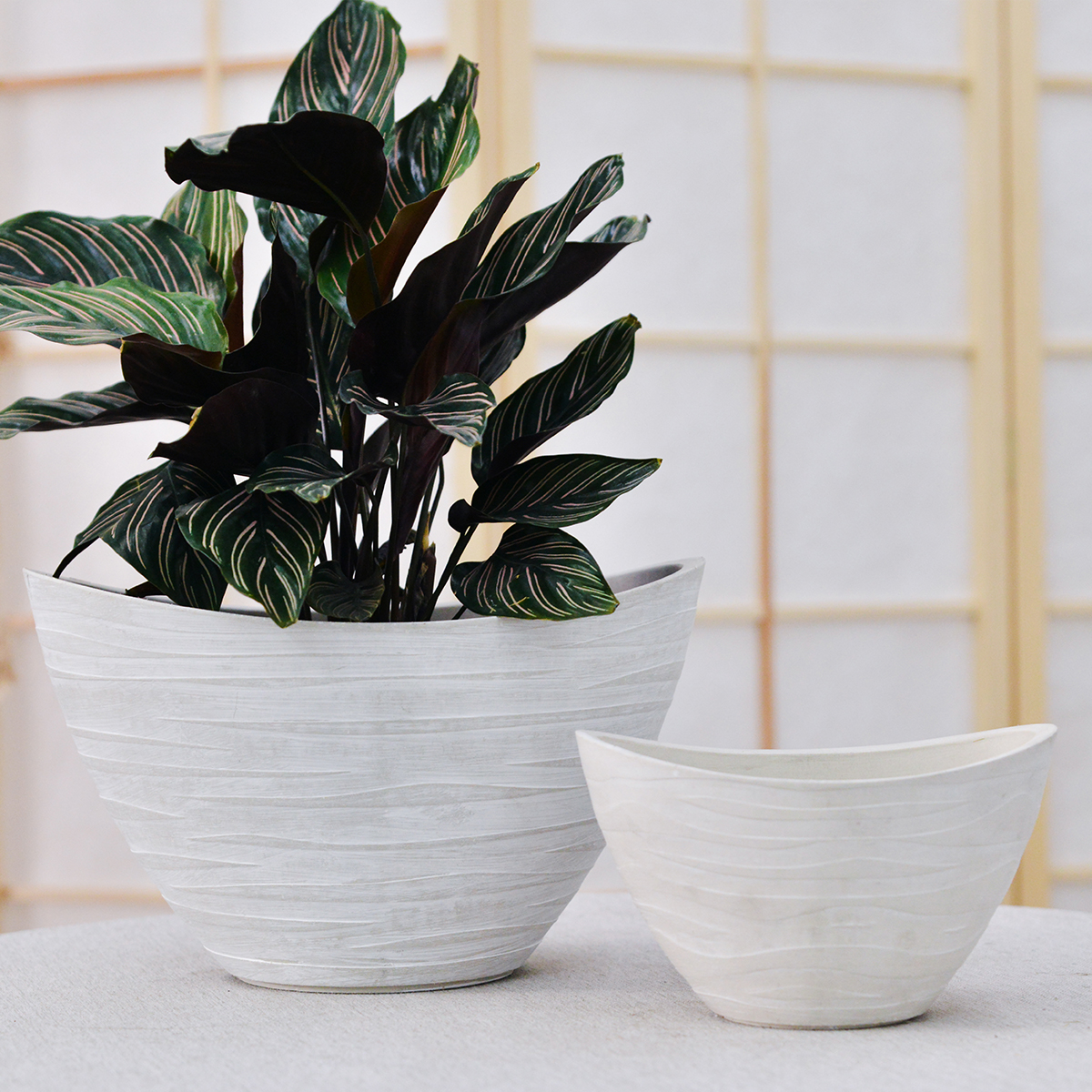What are the disadvantages of self watering plants?
Self-watering containers, while offering numerous benefits, do have some disadvantages to consider:
- Higher Cost: Self-watering containers are typically more expensive to purchase than traditional pots made of terracotta or plastic. The added features and components contribute to a higher price point.1
- Potential for Salt Buildup: Over time, using fertilizers and tap water in self-watering containers can lead to a buildup of mineral salts on the surface of the soil. This occurs because water is drawn up from the reservoir, and salts are left behind to accumulate in the topsoil. Regular top-watering to flush out these salts can mitigate this issue, but it’s an extra step to consider.
- Not Suitable for All Plant Types: While many plants flourish in self-watering setups, they aren’t ideal for every plant.2 Plants that prefer drier soil conditions, such as certain succulents, cacti, and Mediterranean herbs like rosemary or lavender, might not thrive in the consistently moist environment provided by self-watering containers. These plants are more prone to root rot if kept too consistently moist.3
- Risk of Algae Growth: If the water reservoir is exposed to light, algae can grow in the water.4 While generally not harmful to plants, algae growth can be visually unappealing and might require occasional cleaning of the reservoir.5Using opaque containers can help to minimize algae growth.
- Over-reliance and Neglect: The convenience of self-watering containers can sometimes lead to neglect. Gardeners might become less attentive to their plants’ overall needs, assuming the self-watering system is handling everything. It’s still important to regularly check your plants for signs of pests, diseases, and nutrient deficiencies, and to monitor their overall health, even when using self-watering containers.
- Waterlogged Soil if Drainage is Poor: If the potting mix used in the self-watering container is too dense and doesn’t drain well, or if the wicking system is too efficient for the plant type, the soil can become waterlogged. This can lead to root rot, even in a self-watering system designed to prevent it. Using a well-draining potting mix is crucial.
- Limited Control over Watering: While consistent moisture is generally good, there are times when you might want to let the soil dry out more completely between waterings, depending on the plant’s growth stage or the season. Self-watering containers offer less direct control over the watering cycle compared to manual watering methods.

Despite these potential drawbacks, for many common houseplants and certain types of outdoor container gardening, the advantages of self-watering containers often outweigh the disadvantages, especially in terms of convenience and consistent plant hydration.
k2-21G
By greenship|2024-08-13T06:17:26+00:00August 13, 2024|Categories: Hand-carving Series|
11TH
By greenship|2024-08-13T02:50:25+00:00August 13, 2024|Categories: Hand-carving Series|
Modern Plant Pots with Drainage – Indoor & Outdoor Use (6″ Widths)
By greenship-seo|2025-04-10T06:29:43+00:00February 6, 2025|Categories: Hand-carving Series|Tags: Decorative Flower Pots|
Modern Plant Pots丨Planter for Indoor Plants,8 inch or 10 inch Plant Pots with Drainage Hole,Decorative Flower Pots
By greenship-seo|2025-04-10T08:32:55+00:00January 7, 2025|Categories: Hand-carving Series|Tags: Decorative Flower Pots, Self-Watering Pots|
KC2-21G
By greenship|2024-08-13T06:19:08+00:00August 13, 2024|Categories: Hand-carving Series|
20YB
By greenship|2024-08-16T05:37:57+00:00August 16, 2024|Categories: Hand-carving Series|






